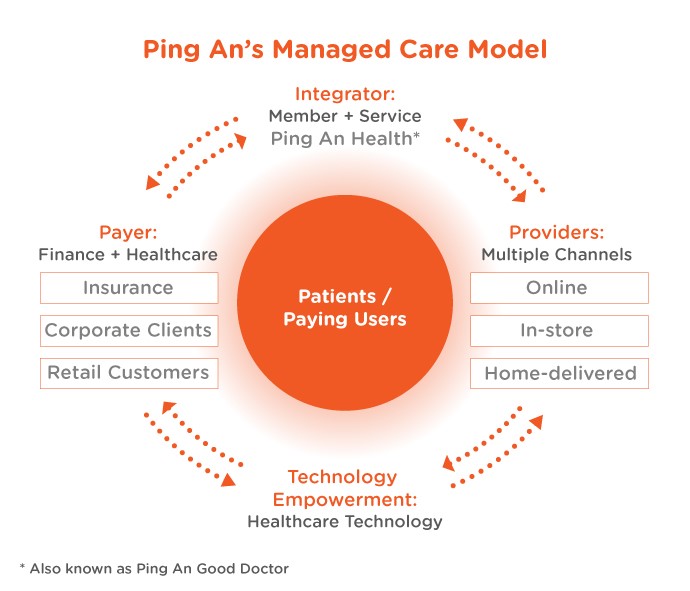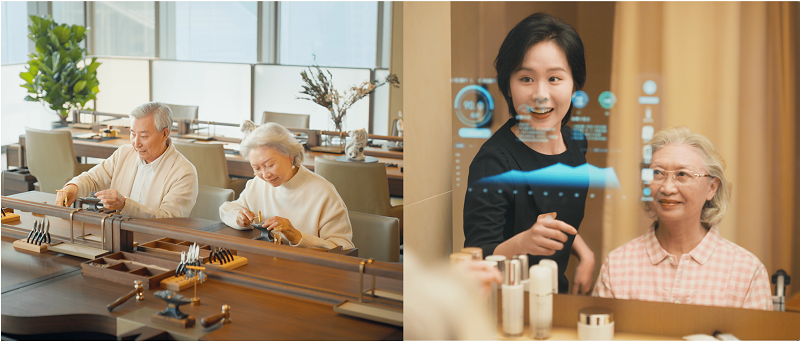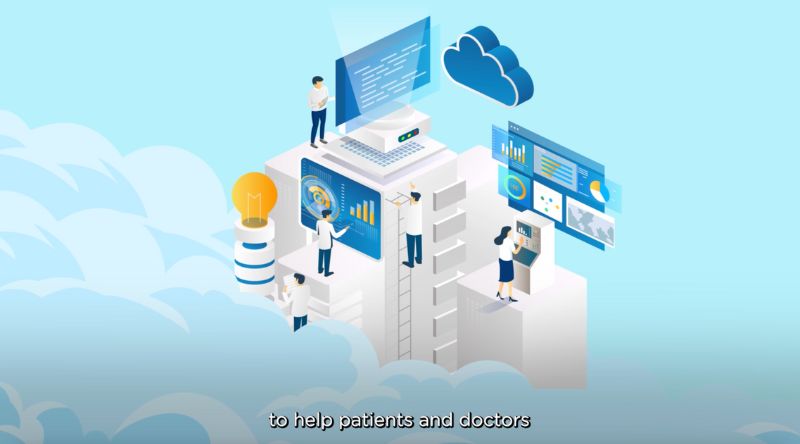In 1950, life expectancy in China was just over 43 years. By 1980, it had risen to 66. Today, it is 77, and by 2050 the United Nations expects it to reach 82 years1, just behind that of the U.S., at 83 years2.
Jessica Tan, co-chief executive of Ping An Group
Rising longevity and a declining birth rate mean China’s overall population is aging. In a recent interview, Jessica Tan, co-CEO at Ping An Group, said, “China has one of the largest and fastest-growing aging populations in the world.”3 By 2040, the World Health Organization predicts China’s over-60s to make up more than 28% of the total population, or 400 million people. That’s more than the total population of the U.S.4
Li Dou, general manager of Ping An Life’s home-based elderly care division in Shenzhen
China’s elderly care is often described by the figure 9073: 90% home-based elderly care, 7% community care and 3% nursing home care5. Traditionally, caring for the elderly was a family concern. But family units are rapidly shrinking. In China today, on average, there are five family members to look after one elderly person. This ratio is predicted to drop to 1.5 in 30 years. The question for society and policy makers is: Who is going to provide care for this burgeoning generation of elderly? Who will pay? Who will integrate or bring all the necessary services together to make elderly care viable?
"Elderly care in China has changed from a family matter to a national affair," says Li Dou, general manager of the home-based elderly care division of Ping An Life in Shenzhen. He adds that the latest government five-year plan proposes building an elderly care service system that coordinates home and community institutions and combines medical care and health care, enabling 24/7 customer services.
In a challenge to the private sector, Li says, the State Council determined commercial insurance institutions should be guided to accelerate the research and development of products suitable for diversified nursing needs such as home care, community care and institutional care.
A new ecosystem to meet a new challenge

Ping An's closed loop model connects customers with insurance companies and medical service institutions, granting all stakeholders in the healthcare ecosystem easy access to one another.
In response, Ping An developed and launched a United Health-style Chinese managed care model by combining differentiated health care services with financial businesses to create a one stop health care ecosystem in which Ping An acts as a payer, providing medical services to its 200 million customers. United Health Group, with 149 million customers6, is the leading multinational managed care group in the U.S. and, according to the latest Forbes Global 2000 rankings, the largest insurance company in the world. Ping An comes in second in the same rankings7.
PhuaTien Beng, co-general manager, Ping An Health Management Group
Singaporean, Phua Tien Beng, who is based in Beijing, is at the provider end of the ecosystem. As group co-general manager, he heads up the hospital and clinic ecosystem as well as medical services. “With Peking University Healthcare Group and the support of Ping An's medical technology platform,” he says, “Ping An has built an ‘online-to-store home’ health care and elderly care service network, realizing the closed loop of insurance + medical services.” Fang Weihao, from Shanghai, heads up the health care ecosystem flagship integrator Ping An Health, also known as Ping An Good Doctor. The chairman and CEO says: “Through the membership system of family doctors, we establish connections between payment parties—including life insurance, pension insurance, health insurance, banks and other comprehensive financial channels serving B-end, F-end and C-end users —and suppliers—cooperative hospitals, pharmacies, health care institutions, testing centers and medical examination organizations, among other health care resources.
Fang Weihao, chairman and chief executive of Ping An Healthcare Technology Co Ltd.
Ping An Health integrates three major business models: managed medical care + family doctor membership + O2O medical and health services, creating an industry leader.
In a nutshell, Ping An actively integrates its abundant health care service resources with nearly 4,000 in-house doctors and over 45,000 contracted external doctors as well as six proprietary 3A/tier-3 hospitals. In addition, by the end of 2022, Ping An had partnered with over 10,000 hospitals (including all top 100 hospitals and 3A hospitals in China), over 100,000 health care management institutions and approximately 224,000 pharmacies.
As Li explains, in terms of insurance + home-based elderly care, Ping An integrates internal and external service providers to offer one-stop, home-based elderly care solutions through a committed AI butler, life concierges (online service) and doctor concierges. The solutions cover 10 scenarios, including medical care, housing, nursing, dining and entertainment.
Ping An is committed to developing the premium elderly care market and delivering innovative one-stop full-life-cycle elderly care solutions. Under its core philosophy of “seven-dimensional health care” and the value proposition of “prime life, exclusive services and respectful care,” Ping An provides customized elderly care services and high-quality elderly care to meet the growing demand for premium elderly care in China.
A new driver of value growth
Today. more than 64% of Ping An’s 229 million retail customers have used services from the health care ecosystem. These customers, on average, held approximately 3.43 contracts and 55,800 yuan ($7,507) in assets under management per capita, 1.6 times and 3.2 times those held by nonusers of these services, respectively. Health care has become a new driver of value growth at Ping An, representing 70 billion yuan in health insurance premium income in the first half of 2023.
Here’s another voice from Ping An’s health care ecosystem on the technology backbone supporting customer health services.
Video of Xie Guo Tong, chief health care scientist
1United Nations – World Population Prospects, loaded 2023 July 5
2United Nations – World Population Prospects, loaded 2023 July 5
3This is from previous partner copy, formal reference to follow, loaded 2023 July 5
4World Health Organisation, Aging and health, Aging and Health in China, loaded 2023 July 5
5Loaded 2023 07 06
6UnitedHealth Investor Conference, 2022, Loaded 2023 July 12
7Forbes Global 2000: The World’s Largest Insurance Companies in 2023, loaded 2023 July 5




